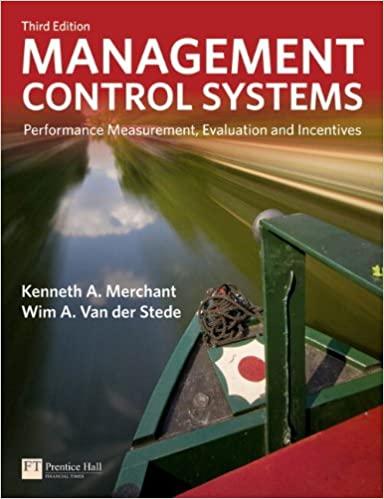
Thompson Industrial Products Inc. (TIPI) is a diversified industrial-cleaner processing company. The company's Dargan plant produces two products: a table cleaner and a floor cleaner from a common set of chemical inputs (CDG). Each week, 877,500 ounces of chemical input are processed at a cost of $212,400 into 585,000 ounces of floor cleaner and 292,500 ounces of table cleaner. The floor cleaner has no market value until it is converted into a polish with the trade name FloorShine. The additional processing costs for this conversion amount to $250,300. FloorShine sells at $22 per 30-ounce bottle. The table cleaner can be sold for $20 per 25-ounce bottle. However, the table cleaner can be converted into two other products by adding 292,500 ounces of another compound (TCP) to the 292,500 ounces of table cleaner. This joint process will yield 292,500 ounces each of table stain remover (TSR) and table polish (TP). The additional processing costs for this process amount to $101,000. Both table products can be sold for $15 per 25-ounce bottle. The company decided not to process the table cleaner into TSR and TP based on the following analysis. Process Further Table Stain Table Remover Table Polish (TP) (TSR) Total Cleaner 292.500 Production in ounces 292,500 292,500 $175,500 $35 1,000 Revenues $234,000 $175,500 Costs: CDG costs 53,100 106,200 * 70,800 53,100 TCP costs 50,500 0 50,500 101,000 Total costs 103,600 70,800 103,600 207,200 Weekly gross profit $163,200 $71.900 $71,900 $143,800 If table cleaner is not processed further, it is allocated 1/3 of the $212,400 of CDG cost, which is equal to 1/3 of the total physical output If table cleaner is processed further, total physical output is 1,170,000 ounces. TSR and TP combined account for 50% of the total physical output and are each allocated 25% of the CDG cost. (a) Your answer is partially correct. Determine if management made the correct decision to not process the table cleaner further by doing the following. (1) Calculate the company's total weekly gross profit assuming the table cleaner is not processed further. $ 197600 Total weekly gross profit (2) Calculate the company's total weekly gross profit assuming the table cleaner is processed further. Total weekly gross profit 145,160 Activate Windows Thompson Industrial Products Inc. (TIPI) is a diversified industrial-cleaner processing company. The company's Dargan plant produces two products: a table cleaner and a floor cleaner from a common set of chemical inputs (CDG). Each week, 877,500 ounces of chemical input are processed at a cost of $212,400 into 585,000 ounces of floor cleaner and 292,500 ounces of table cleaner. The floor cleaner has no market value until it is converted into a polish with the trade name FloorShine. The additional processing costs for this conversion amount to $250,300. FloorShine sells at $22 per 30-ounce bottle. The table cleaner can be sold for $20 per 25-ounce bottle. However, the table cleaner can be converted into two other products by adding 292,500 ounces of another compound (TCP) to the 292,500 ounces of table cleaner. This joint process will yield 292,500 ounces each of table stain remover (TSR) and table polish (TP). The additional processing costs for this process amount to $101,000. Both table products can be sold for $15 per 25-ounce bottle. The company decided not to process the table cleaner into TSR and TP based on the following analysis. Process Further Table Stain Table Remover Table Polish (TP) (TSR) Total Cleaner 292.500 Production in ounces 292,500 292,500 $175,500 $35 1,000 Revenues $234,000 $175,500 Costs: CDG costs 53,100 106,200 * 70,800 53,100 TCP costs 50,500 0 50,500 101,000 Total costs 103,600 70,800 103,600 207,200 Weekly gross profit $163,200 $71.900 $71,900 $143,800 If table cleaner is not processed further, it is allocated 1/3 of the $212,400 of CDG cost, which is equal to 1/3 of the total physical output If table cleaner is processed further, total physical output is 1,170,000 ounces. TSR and TP combined account for 50% of the total physical output and are each allocated 25% of the CDG cost. (a) Your answer is partially correct. Determine if management made the correct decision to not process the table cleaner further by doing the following. (1) Calculate the company's total weekly gross profit assuming the table cleaner is not processed further. $ 197600 Total weekly gross profit (2) Calculate the company's total weekly gross profit assuming the table cleaner is processed further. Total weekly gross profit 145,160 Activate Windows







